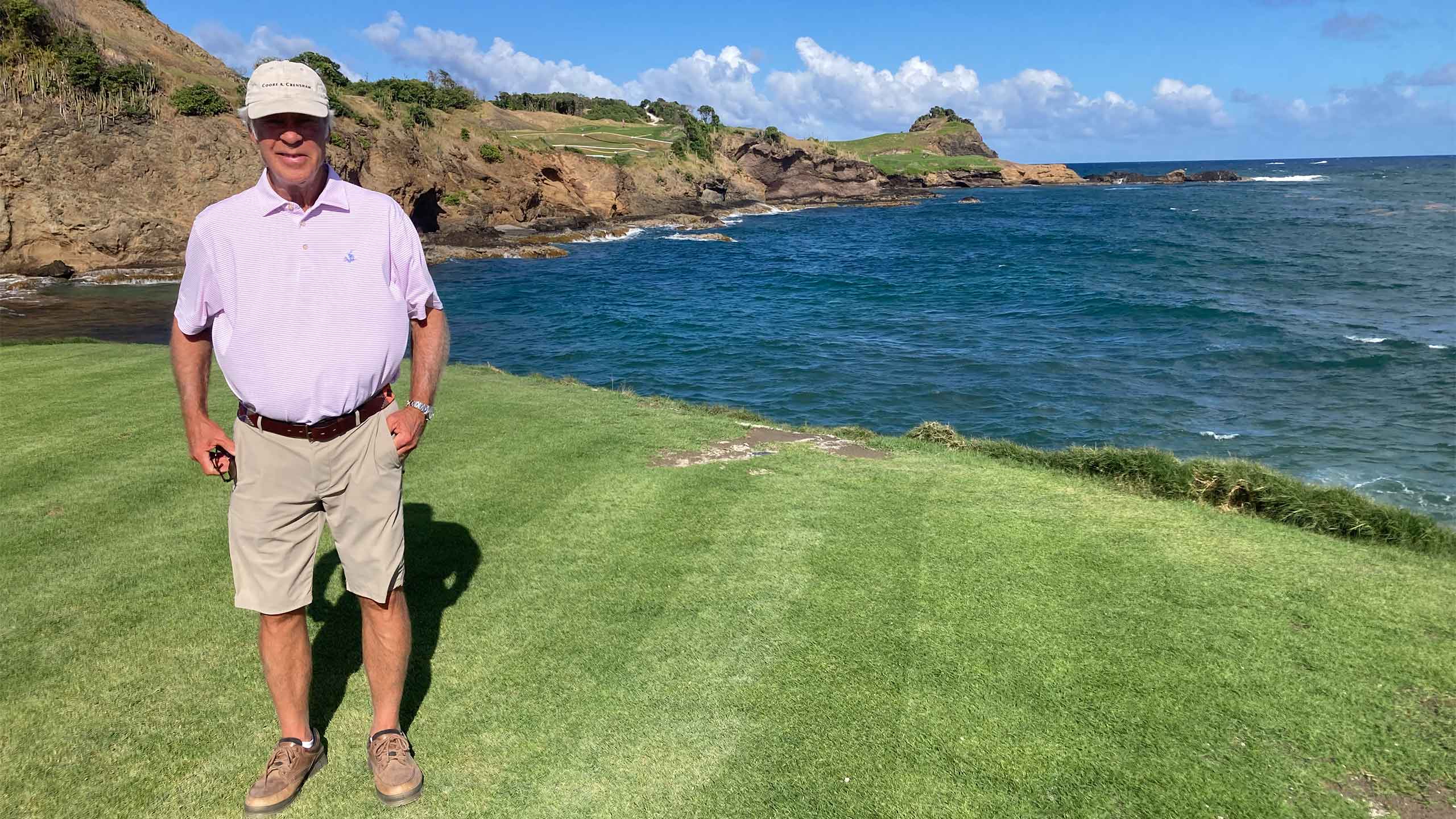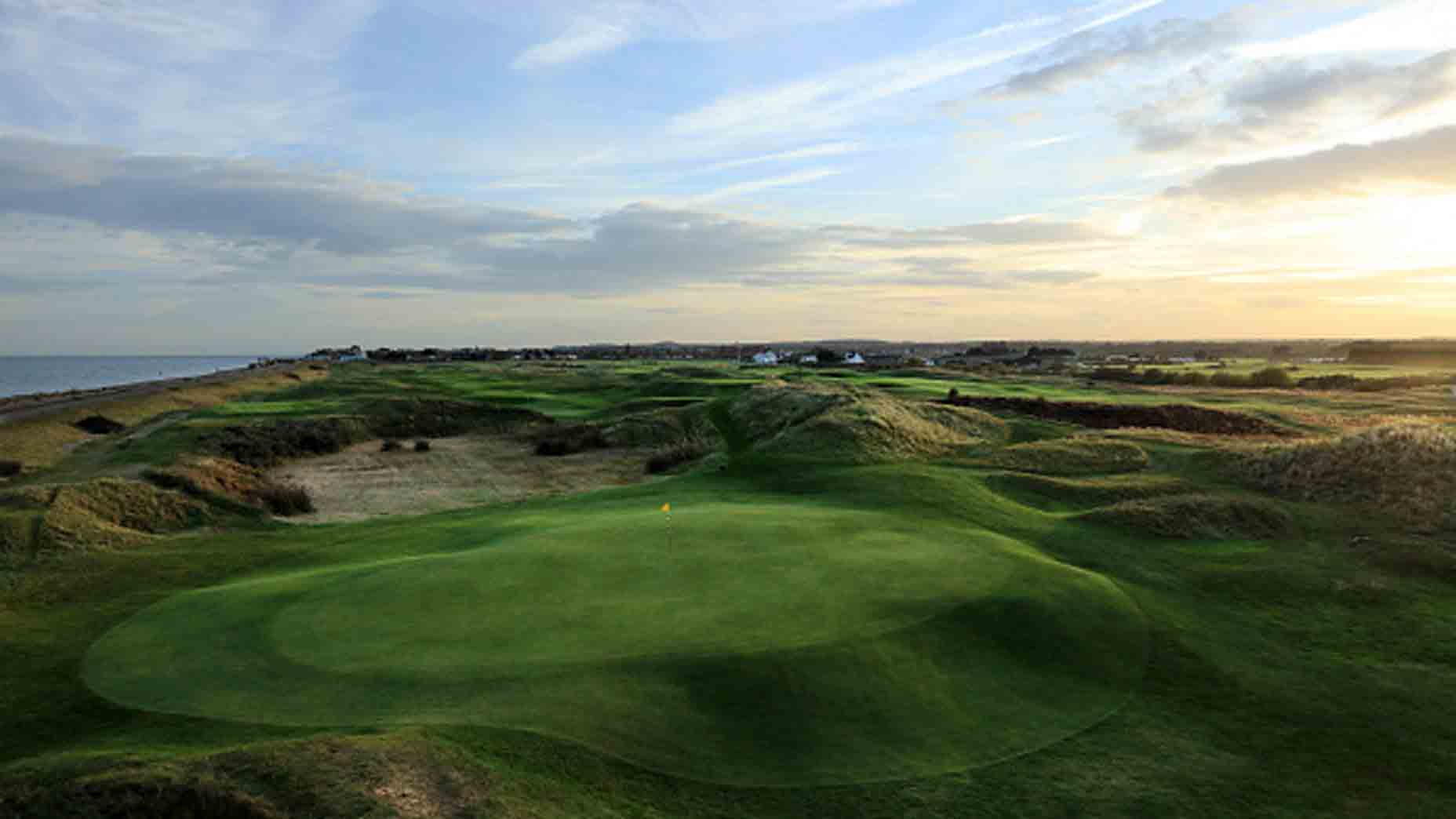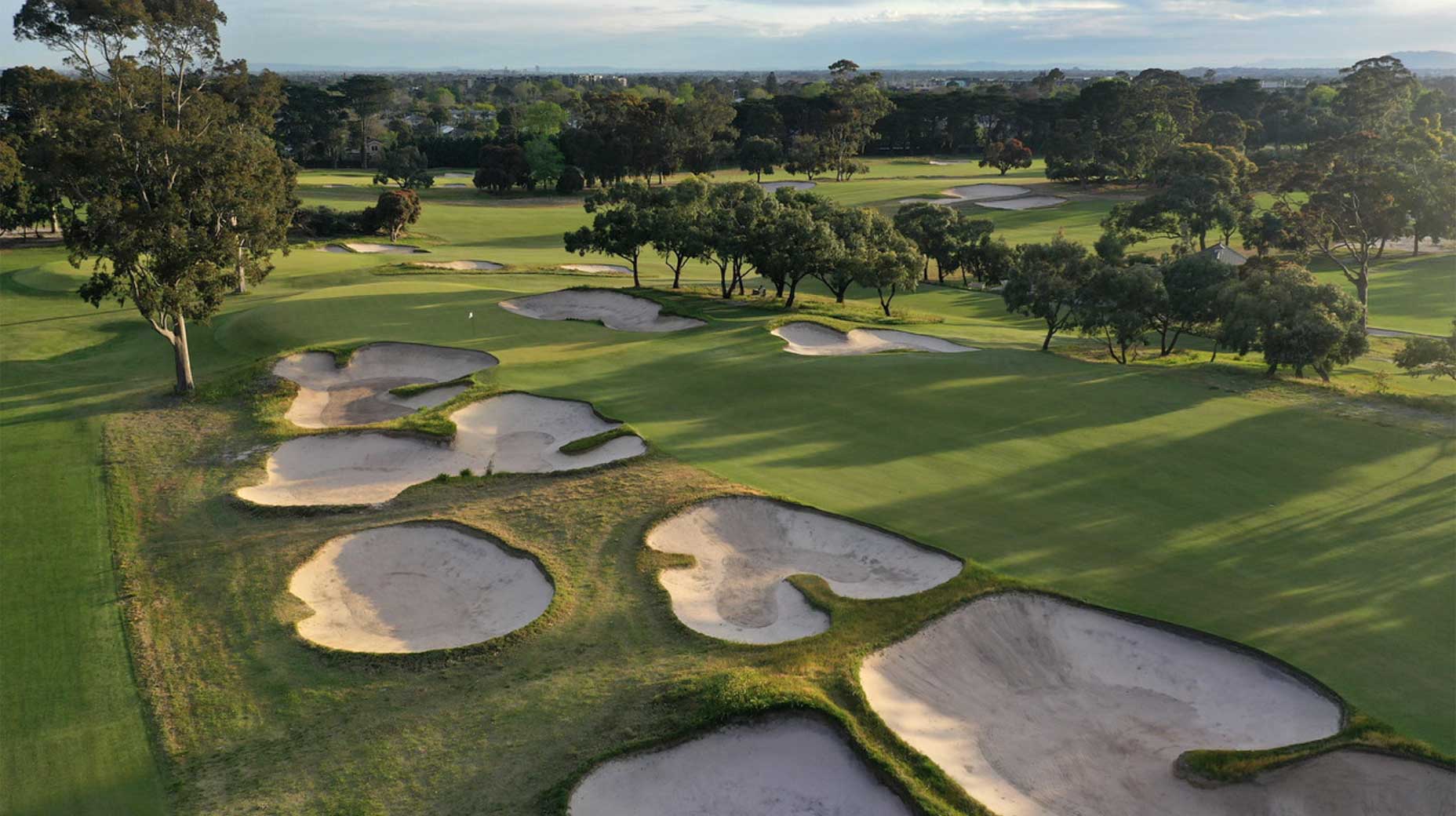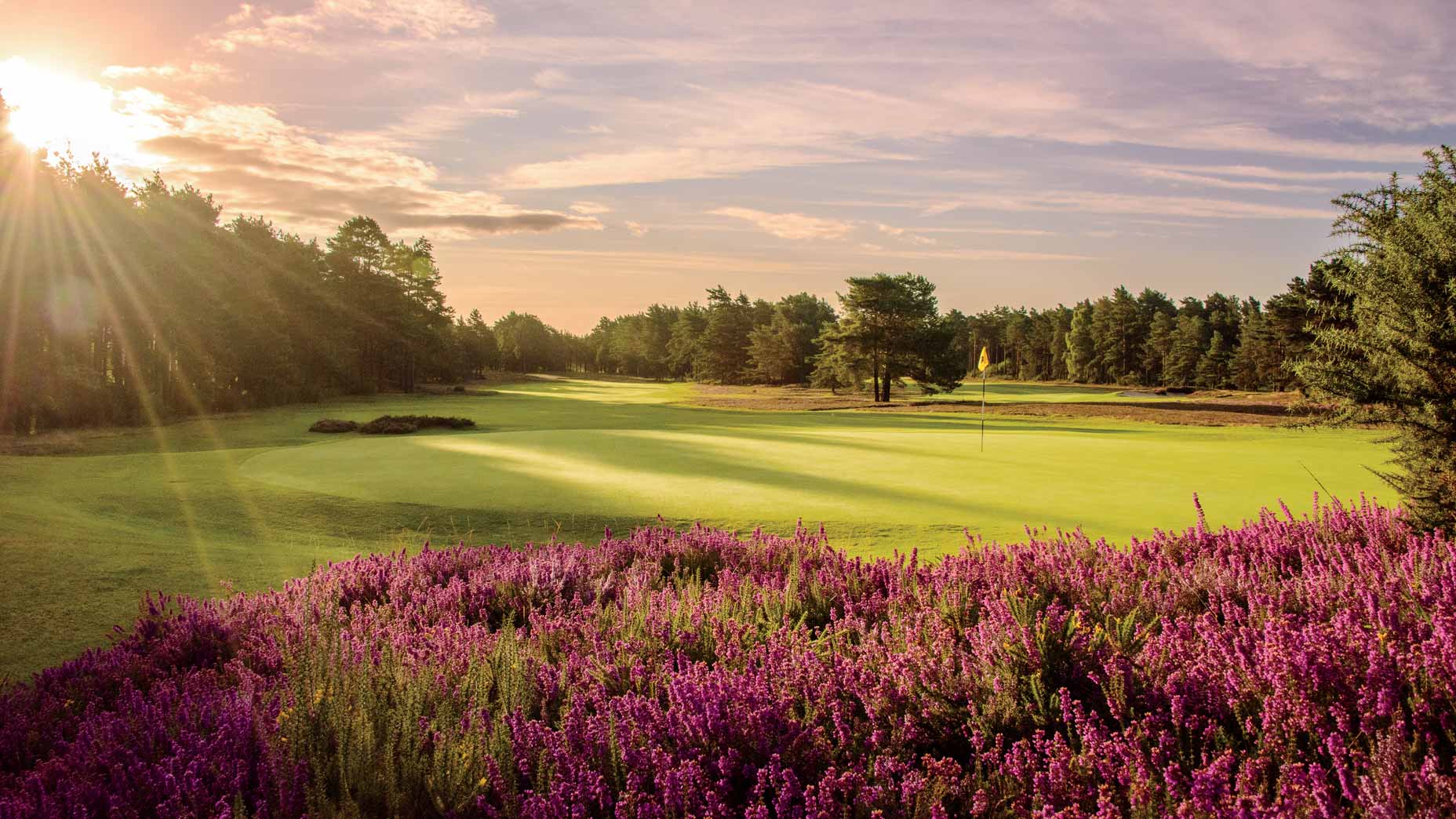I trekked to Cabot’s mythical new golf course. Can it live up to the hype?
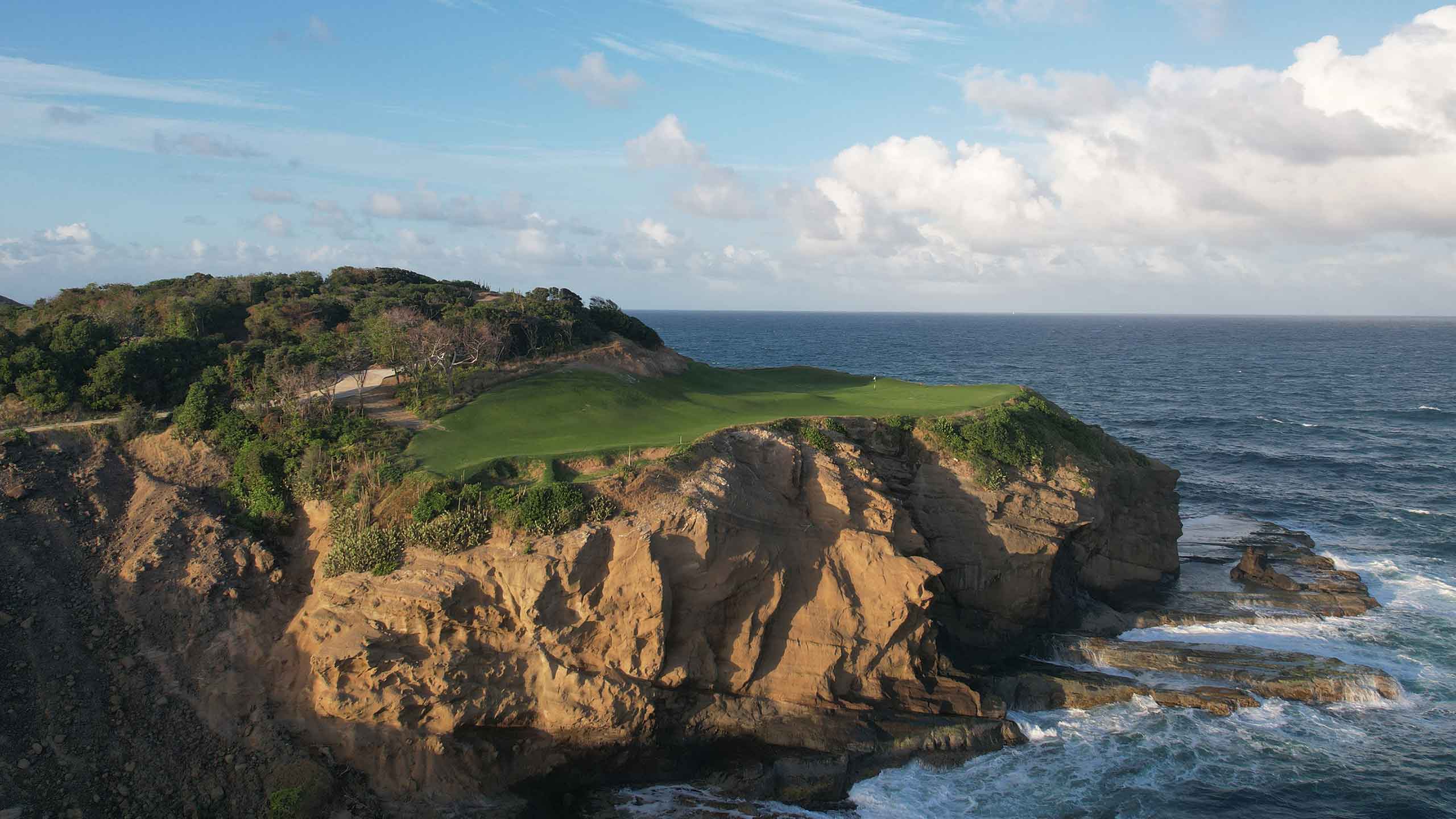
The dream-like Point Hardy Golf Club at Cabot St. Lucia.
GOLF/James Colgan
CAP ESTATE, St. Lucia — On a hilltop high above a remote corner of St. Lucia, a teenager in a sweat-stained shirt slowly loads food onto a flatbed. A glimpse at the rusty platform reveals the boy has done well: There are vacuum-sealed packages of fresh fish, baskets of vegetables and a few cases of cold Piton beer.
The contraption whirs to life, sending the goods on a slow descent into the arms of a small army of cooks waiting below. A steamy afternoon has given way to an idyllic Caribbean evening, and down at the bottom of the hill, a private beachside bungalow is prepping for a party.
It’s sunset at a little sliver of paradise called the Naked Fisherman, which is a hell of a strange place to see the future of golf.
But some of that future is here — or a few miles from here, at a place named Cabot St. Lucia. And from the deck at the Naked Fisherman, Bill Coore tells me the moment he realized he’d discovered it.
It had happened just a day earlier, when Coore and his course-design partner, Ben Crenshaw, had found themselves on the 15th tee box at their latest Cabot design, Point Hardy Golf Club.
Crenshaw was admiring the expanse at 15, the first of four cliffside stunners, when he stopped short. He turned to Coore and asked for a photo to send to Julie, Crenshaw’s wife.
Coore didn’t bother trying to stifle a smile.
“In all these years, that’s never happened before,” he told me on the porch, the same smile plastered across his face.
“He must think it’s pretty good.”
CRENSHAW WASN’T ALONE.
I too found myself in St. Lucia in pursuit of something pretty good, and an oceanfront dinner was only the first glimpse of it.
There would be a dazzling array of acts to follow — bottles, excursions, meals, and, of course, beaches — before we would see the main event: a golf course set into a stretch of cliffside so beautiful it would redefine our perception of Caribbean golf…and maybe regular golf, too.
As the scent of grill smoke wafted into the air, the movers and shakers at the Naked Fisherman began to take their place. In one corner of the deck was Crenshaw, the two-time Masters champion and long-time course designer, clutching a Tito’s and soda stuffed with a fat lemon wedge. In another was Ben Cowan-Dewar, the golf developer behind Cabot, peeling away clothing after arriving on a late-afternoon flight from Toronto. In a third corner still, seated on an old wooden bench far from the noise, was Coore, the man who knew where all the bodies were buried.
Coore is Crenshaw’s creative partner and, if you believe the people who care about these things, one of the most brilliant course designers of the last several decades. A child of rural North Carolina, Coore grew up a modern golf success story, his passion for the game blooming from his working-class upbringing by virtue of access to local gems like Pinehurst No. 2.
Coore found his way into the golf business without any of the advantages owed to Crenshaw, apprenticing for fellow architect Pete Dye until he convinced Crenshaw to open their own design shop. Despite his celebrity, the famously genteel Crenshaw insisted the business go by Coore’s name first, and so Coore & Crenshaw was formed.

The years since have been fruitful, with Coore and Crenshaw’s fingerprints on hundreds of the world’s best courses. Today, the pair has six original designs ranked in GOLF’s Top 100 in the World and has restored or renovated more than a dozen others.
Word of a new Coore-Crenshaw design breeds childlike excitement in the cultish world of course design. Witness the visitors who posted to the internet Zapruder-style images of a much-hyped new Coore-Crenshaw course in Oregon. When the pair’s work on that project — the heavily anticipated “Sheep Ranch” course at Bandon Dunes — was formally announced, it came as no surprise. Most of the golf world had already seen it.
But nothing Coore and Crenshaw have ever done, not even Sheep Ranch, compares to the project that brought a pack of golf journalists to the Naked Fisherman. Not in size, scale, or most notably, hype. As Coore begins to tell me the story of Cabot St. Lucia, I can tell he knows it.
“We’ve had some truly extraordinary sites to work with. I mean, we’ve been so beyond fortunate,” Coore says. “But if we’re talking in the context of visual drama, this golf course, this site — it’s the most visually dramatic site we’ve ever worked with.”
Coore’s poker face is bad — so bad I’m beginning to believe it’s not a poker face at all. There’s an element of salesmanship to course design, where the jobs pay up front but careers are built on a steady stream of business. By the time he reaches me, Coore has given the pitch for Cabot St. Lucia so many times it’s burned into his eyelids.
But the longer he speaks, the more agitated he seems. Truth is, he says, he and Crenshaw are in a unique position: They can afford to be choosy. With Cabot St. Lucia’s jagged cliffs, stunning vistas and dreamy beaches, they didn’t need a salesman to generate interest — they needed only a photographer.
“Anybody who’s ever hit a golf ball in their life could design some of the holes out there,” he says. “I mean, seriously, it’s that beautiful.”

Coore orders a Piton from a server, and soon he’s gesturing with the bottle as he talks through the property. There’s the 2nd hole, a bending, inland par-4 that would have a home at any Coore/Crenshaw course in the world. The 7th, a short cliffside par-3 that Coore says reminds him of the same hole at Pebble Beach. The 8th, a forced carry over a cliff that exposes players to the astonishing oceanfront — where they will play eight holes — for the first time.
The condensation from the beer is dripping down the crook of Coore’s hand when he finally reaches the closing stretch, a staggering array of oceanside holes framed by a massive rock formation. It was these holes, Nos. 15, 16, 17 and 18, that first spurred the attention of the golf world when whispers of Cabot St. Lucia surfaced in 2020. And it is these holes that have brought the course all the way into the No. 76 slot in the world in GOLF’s latest Top 100 rankings, the highest debut of any new original design.
As he talks about the 15th, Coore’s eyes begin to soften. He’s close to saying the thing — that Cabot St. Lucia isn’t Pretty Good, it’s better than that — but every time he starts, he falters.
I grow impatient.
“It feels like you’re scared to say how you really feel,” I say. “Why?”
Coore catches my gaze and his face stretches into a grin.
“Just wait,” he says. “You’ll see.”
THE GOLF WORLD HAS BEEN WAITING for some time now to see Cabot St. Lucia.
The course had been under construction for close to a year when it first appeared on the golf internet in the fall of 2020 — just long enough for the first glossy renderings to permeate an otherwise barren landing page. It was years from completion, even by the most aggressive estimates. Still, it didn’t take long for the images to spread like wildfire on social media, where Cabot St. Lucia quickly became the sport’s first true Covid baby.
The time was good for the emergence of a golf Xanadu. Millions of new players had flooded into the sport, but travel restrictions had kept many of them from venturing much beyond their backyards. Resorts across the industry were battling twin forces: tee sheets were bare but deposits were lined up for years. Cabot St. Lucia’s cliffs, palm trees and crystalline waters were the perfect outlet.
Back in Cap Estate, real life clashed with the Covid dream. Coore-Crenshaw had sent down a trusted crew of land-shapers to execute the vision, but Covid lockdowns and island weather had caused delays.
Just when it seemed those issues were fading, a new issue arose. The beaches buffeting the golf course had been tied to an ancient Amerindian burial ground, causing a stir among the locals. Cabot commissioned an archeological expert to survey the area, potentially dooming the project, but the findings were underwhelming.
The expert, renowned archeologist Reginald Murphy, found that the site was “essentially destroyed” after decades of local car traffic and human use on the beach. The site, or whatever still remained of it, was “99 percent eroded or washed away.” The project was back on.
“It’s a bittersweet situation,” Murphy wrote. “You’re hoping for a grand find, but also … great in the sense that it allowed development to proceed.”
But the challenges weren’t done there. Once work finally began again, Coore-Crenshaw’s employees realized most of the course’s grounds crew needed extra seasoning. Cabot St. Lucia would be only the third course on the island, meaning many of the workers responsible for bringing the place to life had never seen a golf course — let alone worked at one.
Cabot St. Lucia had once targeted a February 2021 opening, but by the end of 2020 the construction timeline had slowed considerably. The course didn’t start its final overseed until the beginning of 2023, and play won’t begin until next month.
“There are many times we’d walk out there and say, ‘Man, I don’t know if we’re going to pull this off,” Coore says now. “These guys that have worked here, I can’t tell you the fortitude and persistence they’ve had, because they’ve literally had to redo some of these things three, four or five times.”
That persistence has come hard-earned at times, particularly for those working their first golf job. As I walked the site alone one afternoon, Damon Di Giorgio, the course’s well-regarded superintendent, stopped me to ask an unusual favor.
“Did you write down anything nice about the course?” he asked.
I paused, confused.
“Anything at all?” he asked again.
I told him I thought the property looked beautiful, and that the nuance from their months of work was noticeable.
Di Giorgio smiled.
“I just want to be able to tell these guys something good,” he said. “I want them to know all the work is going towards something.”
A few fairways later, I came upon one of Di Giorgio’s lieutenants, Ed, wearing a warm smile and an outstretched hand.
Evidently, he’d already received the good word from Di Giorgio, and he wanted to share a message of his own.
“It feels good to be a part of something big.”
BILL COORE’S SPINE TINGLES as he walks up the 3rd fairway.
As he reaches the green, his face scrunches like he smells something foul. After a slow saunter to a greenside bunker, he turns to his longtime aid Trevor Dormer to deliver a message: something’s not right.
“We need to work that shape back up toward the green,” he says, pointing at a three-inch gap in the sod and sand that is not to his liking.
Coore and Dormer spend a few minutes poking away at the bunker, deep in thought, before Crenshaw arrives with a solution in mind. After a few more minutes of prodding, the group is finished, and the bunker looks … the same, except now all three men nod approvingly at it.
This, it seems, is the level of obsession that separates the good course designers from the great ones — a quality that Crenshaw explains simply.
“You try never to do the same thing twice,” he says. “Never, ever let them see you do the same thing twice.”
Innovation is a collaborative art for Coore and Crenshaw, who pour hours of effort into every stage of the build. The creators can’t help but infuse pieces of themselves into their work, a point that comes through in the greenside bunker. Crenshaw is a creative genius and a diplomat; Coore is a perfectionist and commander. Either man alone would be a gifted designer, but together they’re a powerful marriage of ambition and practicality.
Nowhere is this truer than at Cabot St. Lucia, where Coore says the pair “moved mountains, literally,” to coax their design from the Volcanic rock beneath the course. That work was painstaking, but as we walked the course together, it was nearly complete. The result?
It’s good, and not just Pretty Good. Really good.
There is an old analogy about golf courses as music, and that applies here. Many similar courses have been built like pop songs — their flash and polish belying a lack of substance. Cabot St. Lucia is not that. Indeed, Coore and Crenshaw’s shot at playing God has resulted in something heavenly, a symphony of beauty and whimsy that ends with a knee-buckling crescendo. The low notes are thought-provoking, while the high notes are awe-inspiring. In a part of the world known for hit-and-giggle resort golf, Cabot St. Lucia will make you weep.

Of course, good doesn’t mean perfect. There were hiccups to building on a remote island that proved inescapable, and some problems were never fully solved. For one thing, the course remains wholly unwalkable, an oddity for a Coore/Crenshaw design. For another, Cabot St. Lucia represents a departure from Coore and Crenshaw’s typically player-friendly approach. Some holes could perhaps be unfairly difficult on gusty days, with lengthy forced carries even from the forward tees. At least one hole — like the straight-uphill par-4 10th, which feels more apt for a billygoat than a golfer — still elicits groans from the designers.
“No. 10,” Crenshaw shudders when I ask which parts of the build kept him awake at night. “That was the hardest test on this whole property.”
The course’s developers, Cabot, have had it slightly easier. Founder Ben Cowan-Dewar has learned it is not hard to sell people on the view at Cabot St. Lucia, where a residential community will soon pop up. Buyers have flooded in from every direction, an all-star cast that includes Yankees’ first-baseman Anthony Rizzo.
“For a while, the conversion rate was literally 100 percent,” he says with a chuckle. “One hundred percent of the people who came here wanted to buy property.”
For now, access to the course will be limited to those who purchase a home, where listings range from $2 to $8 million — a departure from the traditional course-and-hotel model Cabot has successfully established in Nova Scotia, with similar plans in the works in Florida and Scotland.
Still, Cabot St. Lucia will have availability for public play, and eventually there are hopes to expand access even further, perhaps through another on-property resort. Those decisions, Cowan-Dewar says, will depend on how the course is received.
Hype has been no problem for Cabot St. Lucia, and neither has critical reception. But converting excitement into visitors could prove challenging, particularly for an island that receives only a small number of flights daily, and a golf course that is another two hours from the airport by car, almost the entirety of which is spent on winding island roads.
But perhaps the best indication of Cabot St. Lucia’s long-term success comes from the man responsible for the course’s existence. Cowan-Dewar, after all, was the one who bet golfers would flock to a remote chunk of the Canadian coast for tee times — a bet that produced one of the world’s most celebrated resorts, Cabot Cape Breton.
Cowan-Dewar is making a similar gamble at Cabot St. Lucia, but it’s clear he feels Coore and Crenshaw have helped him stack the deck.
“We’ve always believed to some extent, ‘If you build it, they will come,’” Cowan-Dewar says, summoning the old line from Field of Dreams.
“Here, I think they will.”
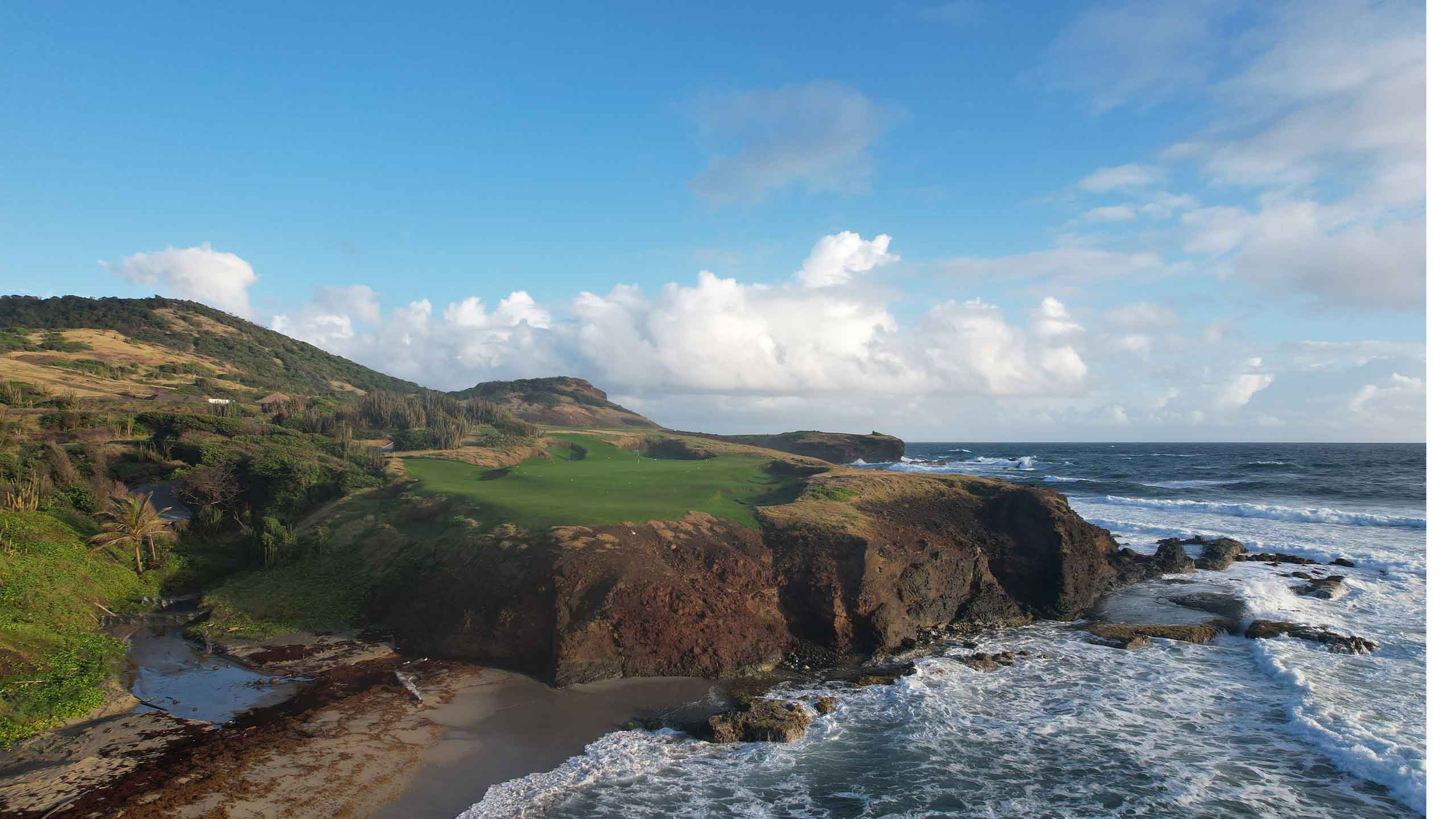
“SO I HEARD A LITTLE RUMOR…” I say to Ben Crenshaw from Point Hardy’s 15th tee.
The sun has begun to set on the horizon, illuminating the sky in a brilliant shade of pink. Crenshaw and I are alone, admiring the view from a small speck of green in the middle of a bright blue sea.
Out across the rocks is the fairway, and out beyond the fairway are three of the final four finishing holes, framed like a postcard. It was this vista that first whipped the golf world into a frenzy in late 2020. Now, the view has come to life, and Crenshaw can only stare.
“I heard that you took a photo right here,” I say. “Something to send back home.”
Crenshaw reaches into his pocket for his phone, then flips the screen toward me. It’s the photo his pal Bill took the previous day.
“Pretty remarkable, huh?” he says.
“Have you ever done that at another golf course?” I ask.
Crenshaw pauses, surveying the land around us. The late afternoon sunlight has electrified the cliffs and the ocean and the course in sepia-toned streaks. The world is quiet except for the sound of crashing waves and the gentle breeze.
He flashes a smile.
“No, I don’t believe I have.”
You can reach James Colgan by email at james.colgan@golf.com
